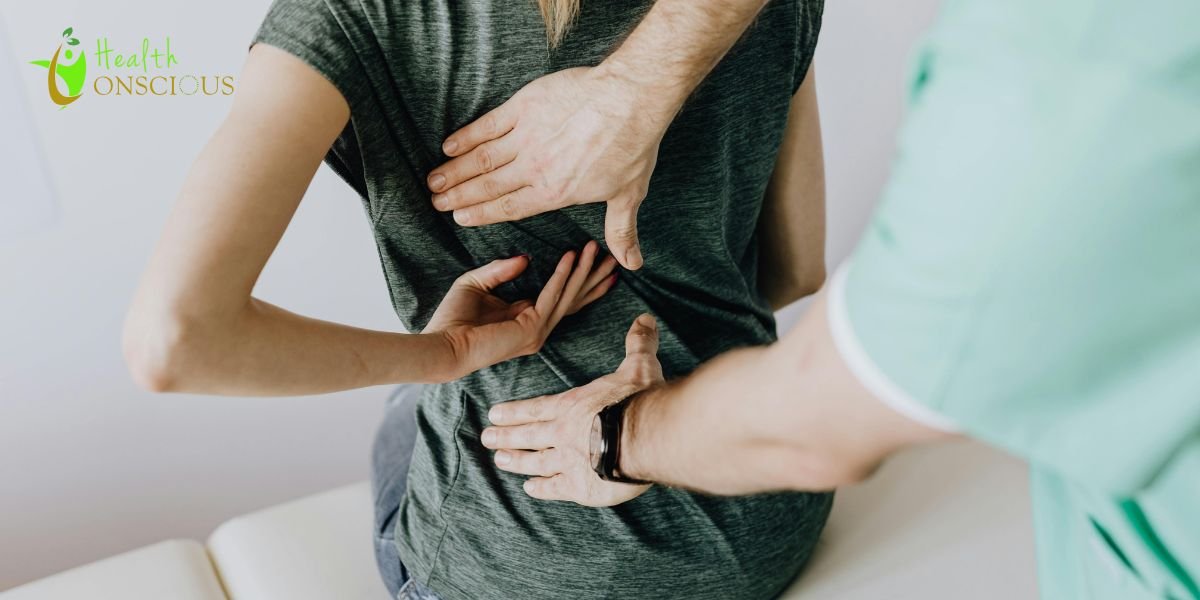People in their 30s and 50s are most likely to get a herniated disc. But the incidence of disc herniation is rising in those in their 20s.
In 95% of disc herniation cases, L5-S1 discs are affected, followed closely by L4-L5. Inactivity and poor posture are usually to blame. Sports injuries and improper lifting can also trigger disc problems.
In Denver, for instance, active lifestyles and long desk hours are leading to a rise in back pain among young people.
Instead of surgery, locals turn to experts offering chiropractic massage in Denver. These experts specialize in easing tension, improving mobility, and helping the spine heal naturally.
Not just Denver, but across the country, more people are now exploring non-surgical ways to manage chronic pain. From chiropractic massage to lifestyle changes, there are effective approaches that don’t involve going under the knife. Dive in, for we’ll discuss a few of them here.
#1 Build Strength With Core Exercises
Strengthening your core can help take pressure off the herniated disc, improve stability, and prevent flare-ups.
Forget the aggressive sit-ups you see everywhere. Focus on movements that keep your spine stable and neutral. Walking or swimming are excellent low-impact options to strengthen muscles without putting pressure on the spine.
The bird-dog exercise, though simple, is highly effective at strengthening the core and stabilizing the spine. Take the tabletop position. Engage your abdominal muscles to flatten and neutralize your spine. Extend the opposite arm and leg, keeping your torso stable and hips level. Hold briefly, then return.
To support your lower back, you must have strong glutes. Glute bridges can strengthen your glutes. Lie on your back with knees bent. Gently lift your pelvis, squeezing your buttocks tightly. Hold for 3 to 5 seconds, then lower your back slowly.
Modified planks and wall sits are also excellent, low-impact strength choices. Planks engage the core muscles without straining the spine. Wall sits build leg strength while reducing pressure on the lower back.
#2 Try Chiropractic Massage for Mobility
When your disc is herniated, the surrounding muscles often tighten up to protect the area. This, unfortunately, can worsen the pain.
Chiropractic massage can help release that tension, improve spinal alignment, and restore movement in your lower back. It combines massage and chiropractic techniques to improve spine and nervous system health.
Chiropractors target pain using spinal adjustments and manipulation. More than relieving discomfort, these adjustments boost mobility and reduce stiffness.
Massage therapy works hand-in-hand with chiropractic care for pain management. It helps reduce pain, muscle tightness, spasms, and localized inflammation.
Deep tissue massage, in particular, is helpful. Denver Integrated Spine Center explains that therapists use slow, deep strokes and sustained pressure to target the inner layers of your muscles and connective tissues in this technique. This breaks up scar tissue that develops following the injury, while decreasing muscle tension.
#3 Sleep in the Right Position
Sleep is your body’s time to heal. But the wrong sleep position can aggravate back pain. To reduce nighttime discomfort, you must sleep in a position that supports your spine’s natural curve.
Sleeping on your back with a pillow under your knees is often considered the best for herniated disc pain. The slight elevation helps maintain your spine’s natural curve. It also relaxes your back muscles.
If you are a side sleeper, try placing a pillow between your knees. This simple trick keeps your pelvis and spine in a neutral line. It also stops your legs from rotating while you sleep. If there is a gap between your waist and the mattress, put a small pillow there as well.
Another great side option is the fetal position. You curl up gently with your knees slightly pulled toward your chest. This curled position opens the spaces between your vertebrae. This movement can take direct pressure off the L5-S1 disc.
Avoid prone sleeping (on the stomach). A study published by the NIH reveals that it increases lower back pain due to lumbar strain.
Sustained Relief Through Consistent Care
Managing chronic herniated disc pain without surgery is absolutely possible. You just have to build a long-term routine that supports your spine, reduces inflammation, and encourages healing. Disc healing takes time, so it’s important not to rush your recovery journey.
Consistency is your greatest ally. Small, steady efforts each day can gradually improve mobility, reduce pain flare-ups, and prevent further injury. Over time, you’ll notice increased flexibility, stronger core and back muscles, and greater confidence in your movements.
This article on HealthsConscious.com is for informational purposes only and should not be considered medical advice. Always consult with a qualified healthcare professional before starting any treatment, exercise, or therapy for a herniated disc or chronic back pain. Individual conditions vary, and only a licensed practitioner can provide personalized medical recommendations.



